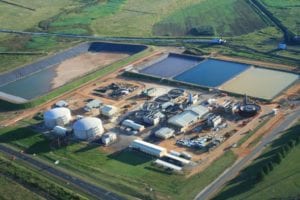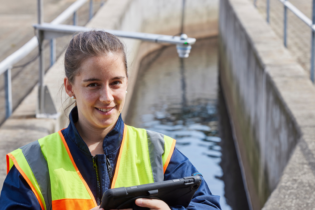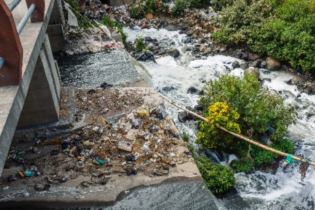Cape Town has put plans for a permanent desalination plant on hold following good rains and reports that the technology is simply too expensive. However, there are feasible options for effectively bolstering water supplies.
The capital and operational costs of desalination plants can often be seen as excessive when compared to increasing water storage capacity and waiting for rainy seasons. However, climate change means utilities can no longer be certain of the ‘normal’ rainfall patterns that have been experienced in the past. This, coupled with global population growth and significant industrial development, means the availability of fresh water supplies is under great threat. Seawater desalination is, therefore, increasingly being considered a viable water resource for industrial and domestic consumption, ensuring that drinking water is available as and when required, explains Ashton Drummond, business development manager, Aveng Water.
ERONGO DESALINATION PLANT – NAMIBIA
Located approximately 30 km north of Swakopmund, the Erongo seawater desalination plant began delivering water in May 2010. It is capable of delivering 54 000 million m3/year of treated water, which is pumped approximately 50 km through an overland pipeline to the Trekkopje mining site.
The Atlantic Ocean along the Namibian coastline is nutrient rich, contains plankton and other sea life, and is subject to incidents of red tide. The plant, therefore, uses 11 parallel ultrafiltration trains for pre-treatment, followed by nine parallel reverse osmosis trains.
Ensuring membrane longevity
Membranes are the largest consumable cost factor in a reverse osmosis desalination plant, and increasing their lifespan can significantly reduce operating costs. For this reason, membrane management is often a concern for the customer, explains Drummond. “If the control and monitoring systems are not sufficient, the plant can very quickly get to a point where the required production is not possible; in extreme circumstances, membranes may become irrecoverable,” he says. Aveng Water has many years of operational experience and currently operates four large-scale membrane plants, all of which have very different feedwaters. This has allowed the company to develop Sigma Ops, an in-house monitoring and control system with a track record that allows Aveng Water to offer five-year membrane warranties. Sigma Ops has been implemented as a continual improvement and optimisation tool, and can be linked to operator performance contracting to ensure that both operational excellence and continual improvement are not only ‘nice-to-have’ discussion topics, but become part of the operational team’s culture and DNA. This provides the plant owner with continual comfort that the membrane assets are being well maintained and continually monitored.Effective operations and maintenance (O&M) is critical to a plant’s successful and long-term economical operations. Aveng Water’s dedicated O&M Division specialises in the management and operation of water treatment equipment to improve efficiency, effectiveness and sustainability of water production.
O&M activities – which encompass not only technical issues but also managerial, social, financial, skills transfer, and training and development – are directed towards the elimination or reduction of the major constraints that prevent the achievement of sustainability.
EMALAHLENI WATER RECLAMATION PLANT, PHASES 1 & 2 – SOUTH AFRICA
The eMalahleni plant was commissioned in 2007 to treat 20 000 m3/day of acidic mine water and has consistently produced high-quality potable water at a water recovery of 99% to 99.5%.
The plant has since been upgraded to treat a peak of 25 000 m3/day from Anglo American Thermal Coal’s Greenside, Kleinkopje, South Witbank and Navigation collieries, with a further expansion recently commissioned in the form of EWRP Phase 2. This upgrade has allowed Aveng Water to showcase its operational expertise by managing two large AMD water treatment plants alongside each other, with vastly different feedwater qualities.
This flagship plant, which produces drinking-quality water for the local municipality, is the recipient of several industry awards.








